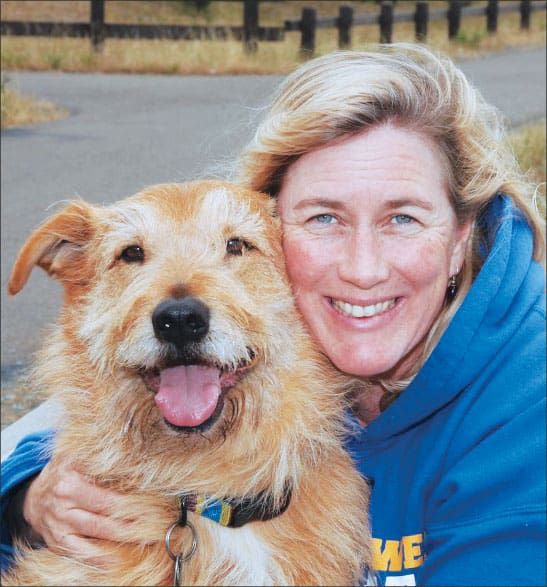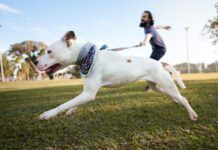This happens all the time: People ask me what I do, and I answer, “I edit a dog magazine.” About 70 percent of the time, their next comment is, “Wow! You must really love dogs!” And the remaining 30 percent of the time, they ask, “So how many dogs do you have?” As if the only person who would be the editor of a dog magazine would also be obsessed to distraction about dogs and/or have 10 of them!

I actually got this job because I have a degree in journalism and experience in editing other animal-related magazines. Before WDJ, I edited three different horse magazines in an eight-year period. Each time I went job hunting, I was looking for an editing job on a human-oriented magazine – and each time, up popped an offer of a job on the staff of a horse magazine. It so happens that I grew up riding horses, and competed in hunter/jumper events well into college, and later, I was exposed to endurance riding and bought my first Arabian, so I knew the equine vernacular. But I was in the same spot when people used to comment, “You must really love horses!” and ask, “How many do you have?” I often felt I had to explain, “I’m not a horse nut! I’m a journalist! I just happen to work for a horse magazine!”
But the undeniable fact is, I do love dogs, and I’m absolutely fascinated by all kinds of animal behavior and all things related to education and learning theory – which, when it comes to animals, we call “training.” I’m also interested in health, fitness, medicine (conventional, complementary, and alternative), and nutrition. So, even though I don’t identify as a dog fanatic and I don’t have eight dogs, I find so many connections between my work and my home life that it makes editing WDJ a dream job.
What do I mean by “connections”? Well, for instance, this morning I had an appointment with a new dentist; my old dentist retired and turned his practice over to a younger doctor. One of the new technologies employed by the new doctor appeared as some sort of weird light that he shined around my mouth. When I asked for an explanation, he said the device is a Velscope, and it possesses filters that make oral cancer cells visible – even cancer cells that are developing several layers of tissue beneath the surface. Honest to goodness, my first response was not, “Good to know that I don’t have oral cancer!” My immediate thought was, “Wow! I wonder if this could be used for dogs!” You see, oral cancer is hard to detect in dogs until it is fairly advanced – so, naturally, I’m looking into whether veterinary applications for the Velscope have been explored.
And those who know me are familiar with my propensity for explaining human behavior in animal-behavior terms. I can’t help but explain to my daughter-in-law why she needs to make sure my two-year-old grandson doesn’t get “reinforced” for whining (with either the toy or treat he wants, or her continued attention in the form of repeated explanations as to why he can’t have what he wants right then) – and warning her to be on the lookout for an “extinction burst” of louder and more persistent whining as she endeavors to stop responding to the “demand behavior.” I hope she doesn’t take offense at her darling son being compared to a dog who is begging at the dinner table; the solution for both obnoxious behaviors is essentially the same – although no crates are involved in toddler training.
So, anyway, when the receptionist at my new dentist’s office asked, “What do you do?” and I responded that I edit a dog magazine, and she said, “Oh, you must love dogs! How many do you have?” I just smiled and said, “Two!”






